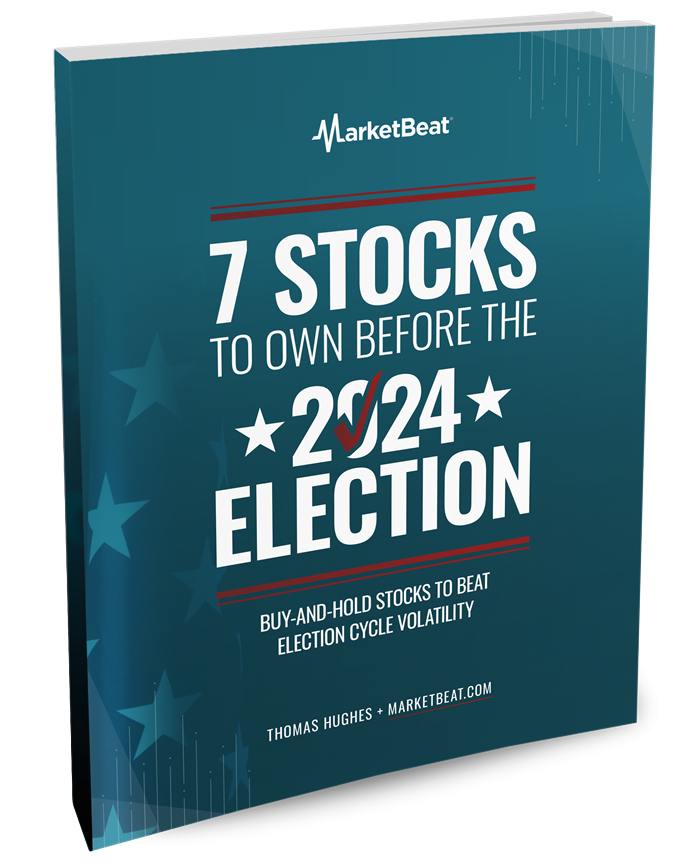Key Points
- Ulta Beauty stock is a must-have for investors aiming to outperform the U.S. markets in the current stagflation environment.
- Despite high inflation and rising prices, Ulta saw an increase in all of the fundamental drivers that matter for the business.
- Analysts see a double-digit upside from today’s prices, and profitability is still near all-time highs on an ROIC basis.
- 5 stocks we like better than Consumer Discretionary Select Sector SPDR Fund
After reporting its first quarter 2024 earnings results, shares of Ulta Beauty Inc. NASDAQ: ULTA rallied by 12.7% as an initial reaction to the company’s financials. What investors need to keep in mind for the following months is Ulta’s resilient product line, which could be considered part of the consumer staples sector rather than the retail sector.
(As of 06/3/2024 ET)
- 52-Week Range
- $368.02
▼
$574.76
- P/E Ratio
- 15.21
- Price Target
- $507.30
Despite having all of the typical characteristics that a value investor like Warren Buffett looks for, Ulta stock is still too small of a fish for Berkshire Hathaway Inc. NYSE: BRK.A to go after. At an $18 billion market capitalization, Ulta stock represents too tiny of a catch for Buffett’s current $168 billion cash pile.
Luckily for retail investors, Ulta is sized to gain exposure to the Consumer Discretionary Select Sector SPDR Fund NYSEARCA: XLY. Despite lowering guidance for the rest of 2024, Ulta management still thinks the stock is not only cheap today but could see higher prices in the near future.
Ulta’s Stock is Right for Today’s Economy
Many economists have had to wake up to one of history’s most dreaded economic environments: Stagflation. Defined as low economic growth, measured as GDP, along with high inflation, the U.S. economy looks to be headed that way.
After a revised 1.3% GDP growth for the past quarter and over 3% inflation, the economy has been contracting on a real – not nominal- rate basis. While this spells bad news for most stocks, it shouldn’t affect Ulta’s business.
Consumers will always find a way to squeeze a budget for makeup and skincare products, whether the economy is booming or busting. Because of this, Ulta’s comparable sales rose by 1.6% when net sales pushed 3.5% higher, driven by a 0.3% increase in average tickets.
Inflation-choked consumers had no issue paying a 0.3% higher price at Ulta’s counter, proving how recession-proof Ulta’s products can be. Willing to give up short-term profits for a larger market share, here’s what Ulta’s management got right.
Ulta’s Loyal Customers Drive Return on Capital
As a percentage of sales, gross profits declined from 40% to 39.2% as Ulta gave up some of the gains it could have had if it kept up with inflation. Because the average ticket price only rose by 0.3%, Ulta’s gross profit contracted against over 3% inflation, but that’s alright.
With over 40,000 loyalty member customers and keeping their prices competitive against peers like Sephora, Ulta knows it needs to invest in accommodating its future growth.
- Overall MarketRank™
- 4.80 out of 5
- Analyst Rating
- Moderate Buy
- Upside/Downside
- 30.1% Upside
- Short Interest
- Healthy
- Dividend Strength
- N/A
- Sustainability
- -1.83
- News Sentiment
- 0.80
- Insider Trading
- Selling Shares
- Projected Earnings Growth
- 11.29%
See Full Details
This is why Ulta invested up to $91 million to open new stores, reporting 10 new store openings over the quarter. Focusing on statistics, Ulta’s 42,200 loyalty membership customers over the net square footage of 14,614 this quarter bring a ratio of roughly 2.9x.
Historically, this ratio has hovered between 2.3x and 2.6x, meaning Ulta needs to start opening more locations. This strategy is being implemented in a cooperative deal with Target Co. NYSE: TGT, as the two companies will cross-pollinate their audience by combining their locations.
Knowing that net membership users have grown at a compounded average growth rate (CAGR) of 4.8% over the past six years, management is absolutely willing to avoid passing on these cost increases to customers, which are the heart of the company’s attractive return on invested capital (ROIC) rates.
Understanding Ulta’s Wealth Compounding Factor
Over the past five years, Ulta has generated between 24% and 26% ROIC. Annual stock price performance matches the long-run ROIC rate for a company since it is essentially the rate at which the business itself is growing underneath the hood.
Noticing that Ulta stock is now trading at only 70% of its 52-week high, with no adverse effects on its ROIC, management took an interest in its stock. Announcing a $2 billion stock buyback program was the concept. Still, deploying $289 million into buying back stock this quarter was the start.
With $1.8 billion left in the program, Ulta management could consider buying back cheaper stock at today’s 15.2x P/E ratio, when historically, stock buybacks have been implemented around 22x to 25x P/E.
J.P. Morgan Chase & Co. analysts think Ulta could rise to $544 a share, previously boosting their targets from $530. The stock would need to rally by 37.7% from today’s prices to prove these projections right.
Before you consider Consumer Discretionary Select Sector SPDR Fund, you’ll want to hear this.
MarketBeat keeps track of Wall Street’s top-rated and best performing research analysts and the stocks they recommend to their clients on a daily basis. MarketBeat has identified the five stocks that top analysts are quietly whispering to their clients to buy now before the broader market catches on… and Consumer Discretionary Select Sector SPDR Fund wasn’t on the list.
While Consumer Discretionary Select Sector SPDR Fund currently has a “Hold” rating among analysts, top-rated analysts believe these five stocks are better buys.
View The Five Stocks Here

Looking to avoid the hassle of mudslinging, volatility, and uncertainty? You’d need to be out of the market, which isn’t viable. So where should investors put their money? Find out with this report.
Get This Free Report
